
How to Use DC-DC Step-Down Buck Converter Power Supply Module 24V 12V 9V to 5V 5A 25W: Examples, Pinouts, and Specs
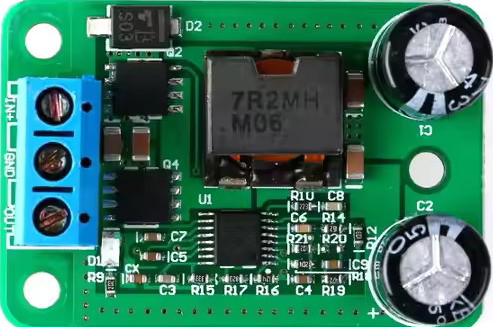
 Design with DC-DC Step-Down Buck Converter Power Supply Module 24V 12V 9V to 5V 5A 25W in Cirkit Designer
Design with DC-DC Step-Down Buck Converter Power Supply Module 24V 12V 9V to 5V 5A 25W in Cirkit DesignerIntroduction
The DC-DC Step-Down Buck Converter Power Supply Module is a highly efficient voltage regulator designed to step down higher input voltages (e.g., 24V, 12V, or 9V) to a stable 5V output. It is capable of delivering up to 5A of current with a maximum power output of 25W. This module is widely used in applications requiring efficient power conversion, such as powering microcontrollers, single-board computers (e.g., Raspberry Pi, Arduino), USB devices, and other low-voltage electronics.
Explore Projects Built with DC-DC Step-Down Buck Converter Power Supply Module 24V 12V 9V to 5V 5A 25W
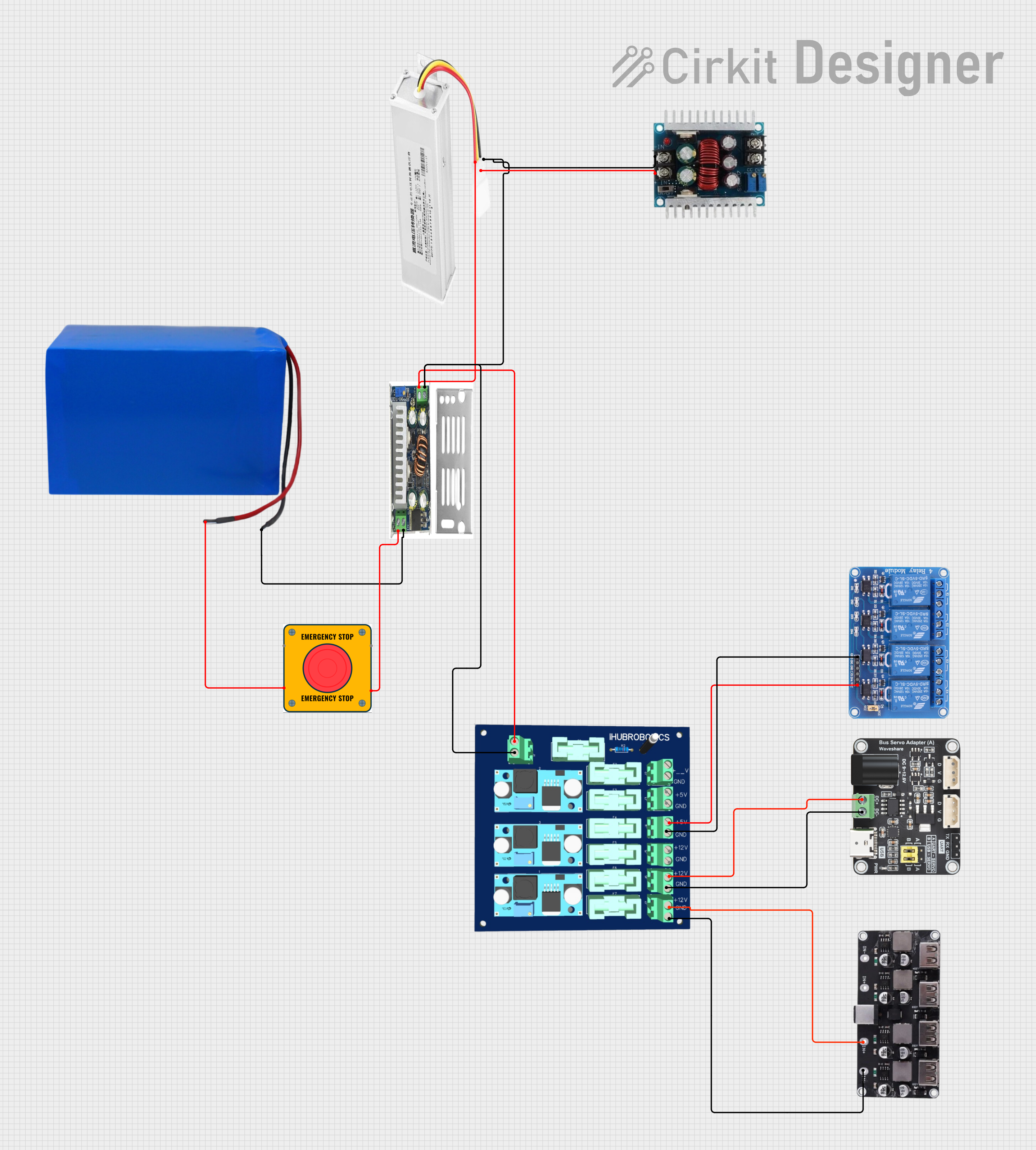
 Open Project in Cirkit Designer
Open Project in Cirkit Designer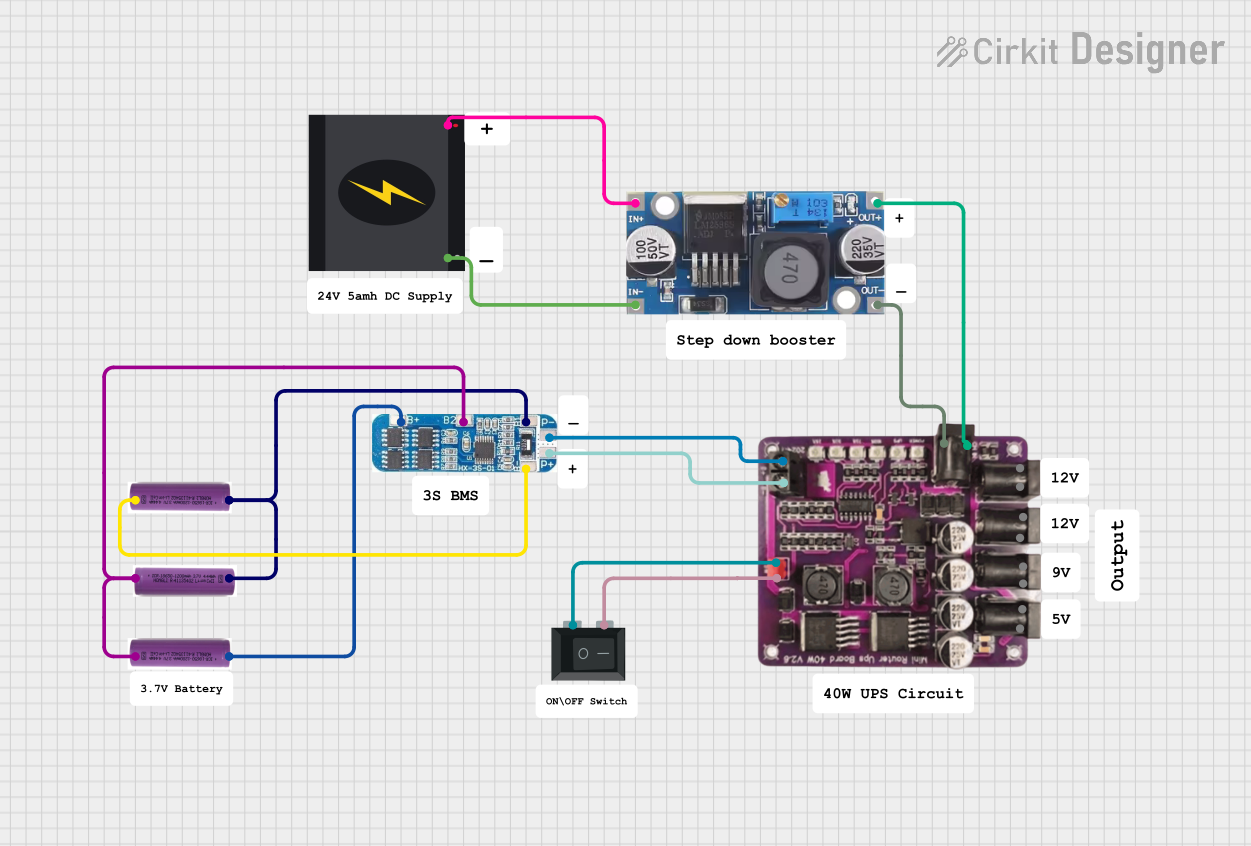
 Open Project in Cirkit Designer
Open Project in Cirkit Designer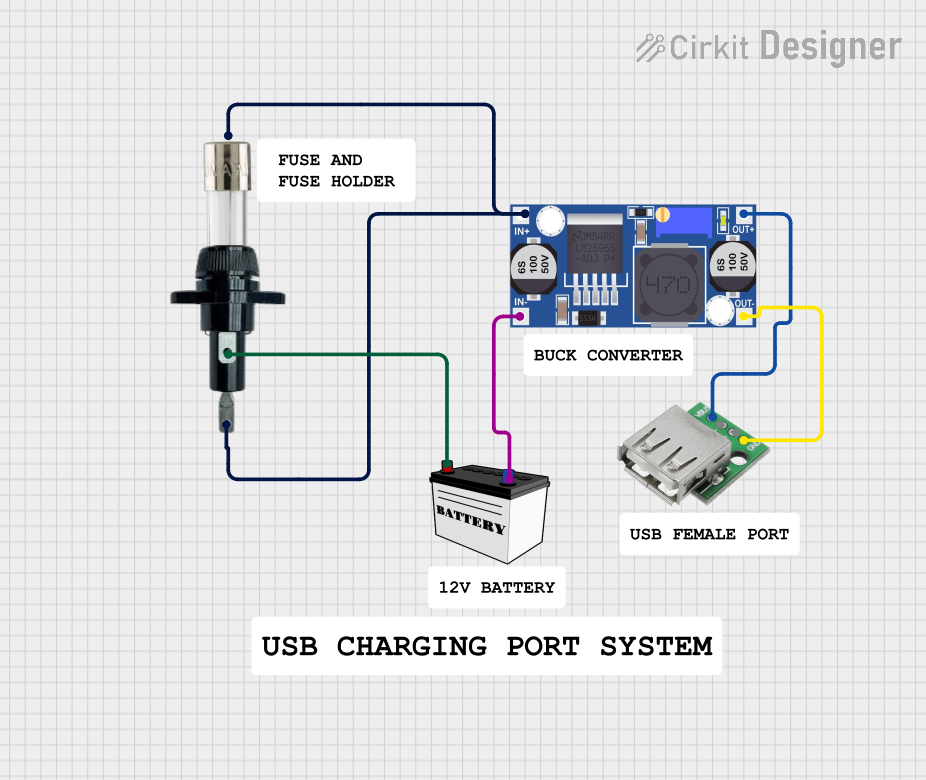
 Open Project in Cirkit Designer
Open Project in Cirkit Designer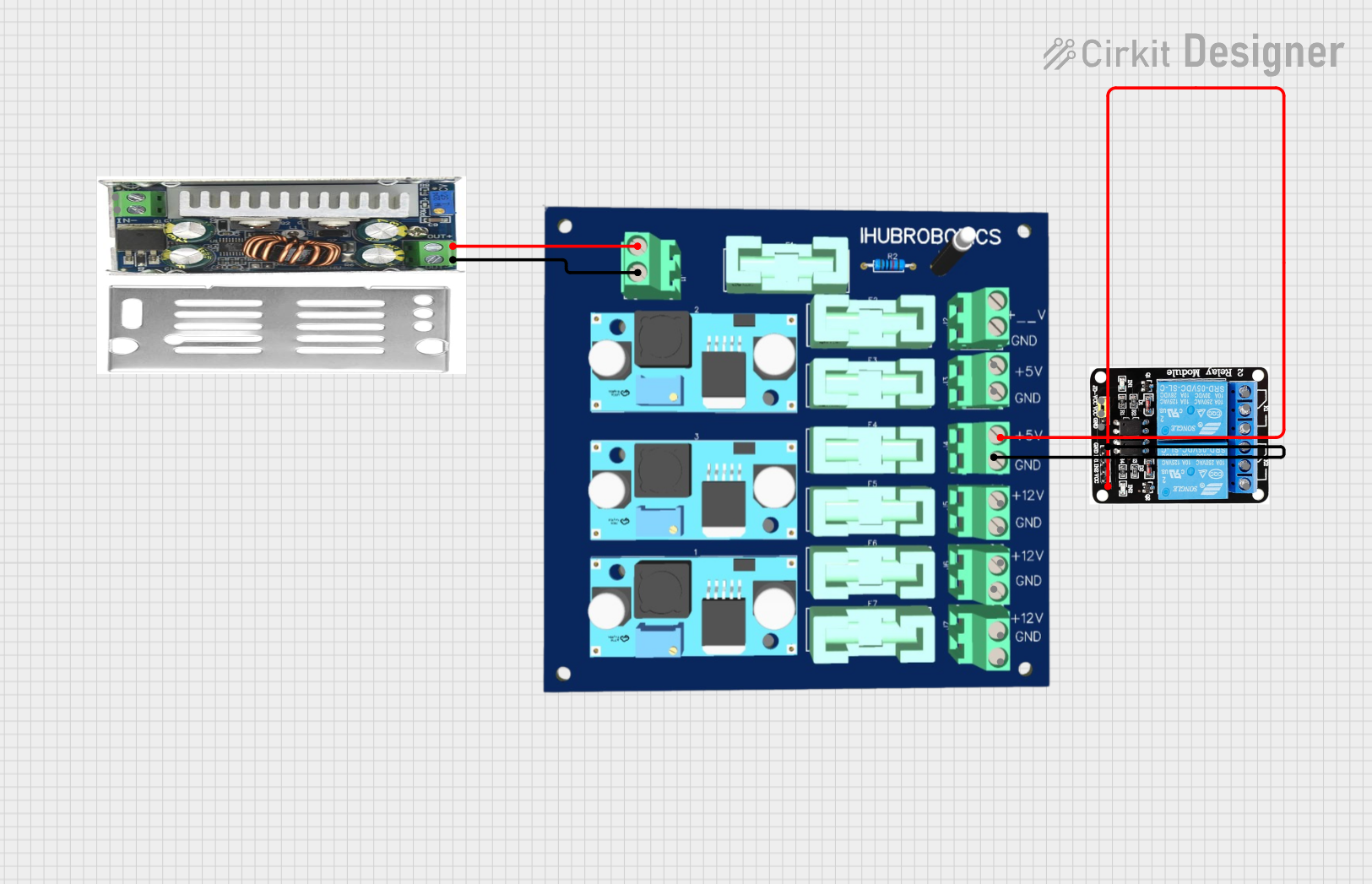
 Open Project in Cirkit Designer
Open Project in Cirkit DesignerExplore Projects Built with DC-DC Step-Down Buck Converter Power Supply Module 24V 12V 9V to 5V 5A 25W

 Open Project in Cirkit Designer
Open Project in Cirkit Designer
 Open Project in Cirkit Designer
Open Project in Cirkit Designer
 Open Project in Cirkit Designer
Open Project in Cirkit Designer
 Open Project in Cirkit Designer
Open Project in Cirkit DesignerCommon Applications
- Powering 5V devices from higher voltage sources (e.g., car batteries, solar panels).
- USB power supply for charging smartphones, tablets, or other USB-powered devices.
- Voltage regulation in embedded systems and IoT projects.
- Powering LED strips or other low-voltage lighting systems.
Technical Specifications
Key Specifications
| Parameter | Value |
|---|---|
| Input Voltage Range | 6V to 24V |
| Output Voltage | 5V (fixed) |
| Maximum Output Current | 5A |
| Maximum Power Output | 25W |
| Efficiency | Up to 96% |
| Operating Temperature | -40°C to +85°C |
| Dimensions | ~60mm x 21mm x 14mm |
Pin Configuration and Descriptions
| Pin Name | Description |
|---|---|
| VIN+ | Positive input voltage terminal (connect to the higher voltage source). |
| VIN- | Negative input voltage terminal (connect to the ground of the power source). |
| VOUT+ | Positive output voltage terminal (provides the regulated 5V output). |
| VOUT- | Negative output voltage terminal (connect to the ground of the load). |
Usage Instructions
How to Use the Module in a Circuit
Connect the Input Voltage:
- Connect the positive terminal of your power source (e.g., 12V battery) to the
VIN+pin. - Connect the ground of your power source to the
VIN-pin. - Ensure the input voltage is within the range of 6V to 24V.
- Connect the positive terminal of your power source (e.g., 12V battery) to the
Connect the Output Load:
- Connect the positive terminal of your load (e.g., a 5V device) to the
VOUT+pin. - Connect the ground of your load to the
VOUT-pin.
- Connect the positive terminal of your load (e.g., a 5V device) to the
Power On:
- Turn on the power source. The module will regulate the input voltage and provide a stable 5V output.
Verify Output:
- Use a multimeter to confirm the output voltage is 5V before connecting sensitive devices.
Important Considerations
- Heat Dissipation: At high currents (e.g., 5A), the module may generate heat. Ensure proper ventilation or use a heatsink if necessary.
- Input Voltage Range: Do not exceed the maximum input voltage of 24V to avoid damaging the module.
- Polarity: Double-check the polarity of your connections. Reversing the input or output connections can damage the module.
- Load Requirements: Ensure the connected load does not exceed the maximum power output of 25W (e.g., 5V × 5A).
Example: Using with an Arduino UNO
The module can be used to power an Arduino UNO from a 12V source. Below is an example circuit and code:
Circuit Connections
- Connect the
VIN+pin of the module to the positive terminal of a 12V power source. - Connect the
VIN-pin to the ground of the power source. - Connect the
VOUT+pin to the5Vpin of the Arduino UNO. - Connect the
VOUT-pin to theGNDpin of the Arduino UNO.
Example Code
// Example code to blink an LED using Arduino UNO powered by the buck converter
// Ensure the buck converter is providing a stable 5V output to the Arduino
const int ledPin = 13; // Pin connected to the onboard LED
void setup() {
pinMode(ledPin, OUTPUT); // Set the LED pin as an output
}
void loop() {
digitalWrite(ledPin, HIGH); // Turn the LED on
delay(1000); // Wait for 1 second
digitalWrite(ledPin, LOW); // Turn the LED off
delay(1000); // Wait for 1 second
}
Troubleshooting and FAQs
Common Issues and Solutions
No Output Voltage:
- Cause: Incorrect input connections or insufficient input voltage.
- Solution: Verify the input voltage is within the 6V to 24V range and check the polarity of the connections.
Overheating:
- Cause: High current draw or poor ventilation.
- Solution: Reduce the load current or add a heatsink to the module.
Output Voltage Not 5V:
- Cause: Faulty module or excessive load.
- Solution: Test the module with a lighter load or replace the module if necessary.
Module Not Powering the Load:
- Cause: Load exceeds the maximum power rating.
- Solution: Ensure the load does not draw more than 5A or 25W.
FAQs
Can I adjust the output voltage?
- No, this module provides a fixed 5V output and does not have an adjustable voltage feature.
Can I use this module to charge a USB device?
- Yes, the module can be used to power USB devices, but ensure the connected device does not exceed the 5A current limit.
What happens if I connect a higher input voltage (e.g., 30V)?
- Exceeding the maximum input voltage of 24V can permanently damage the module. Always stay within the specified range.
Is the module protected against short circuits?
- Some versions of this module may include short-circuit protection, but it is recommended to verify this feature in the product datasheet or test it cautiously.